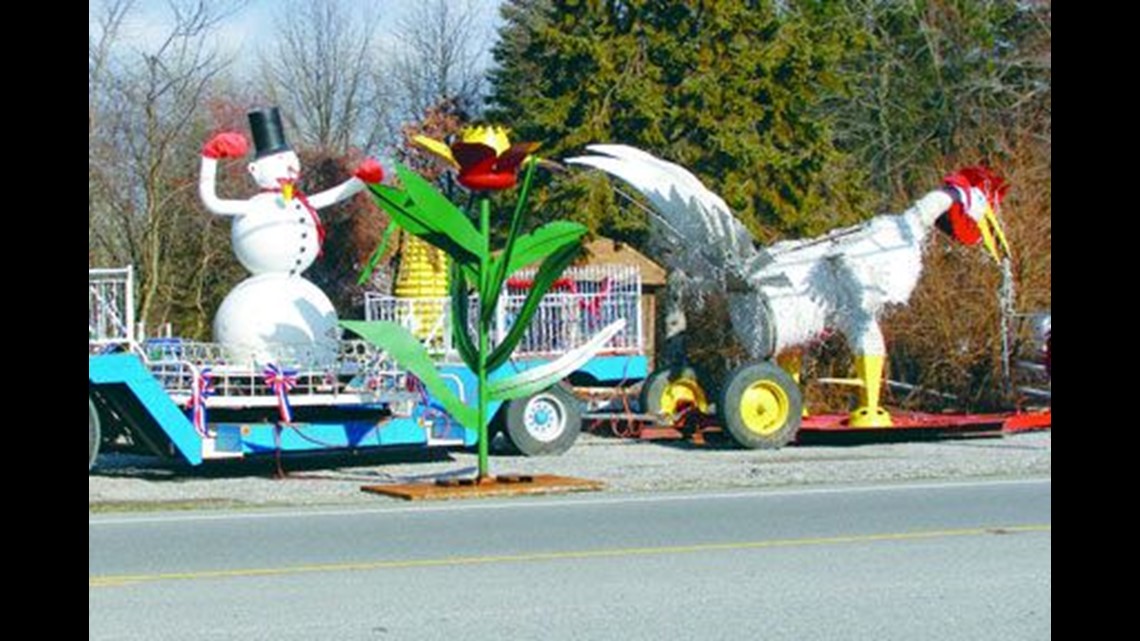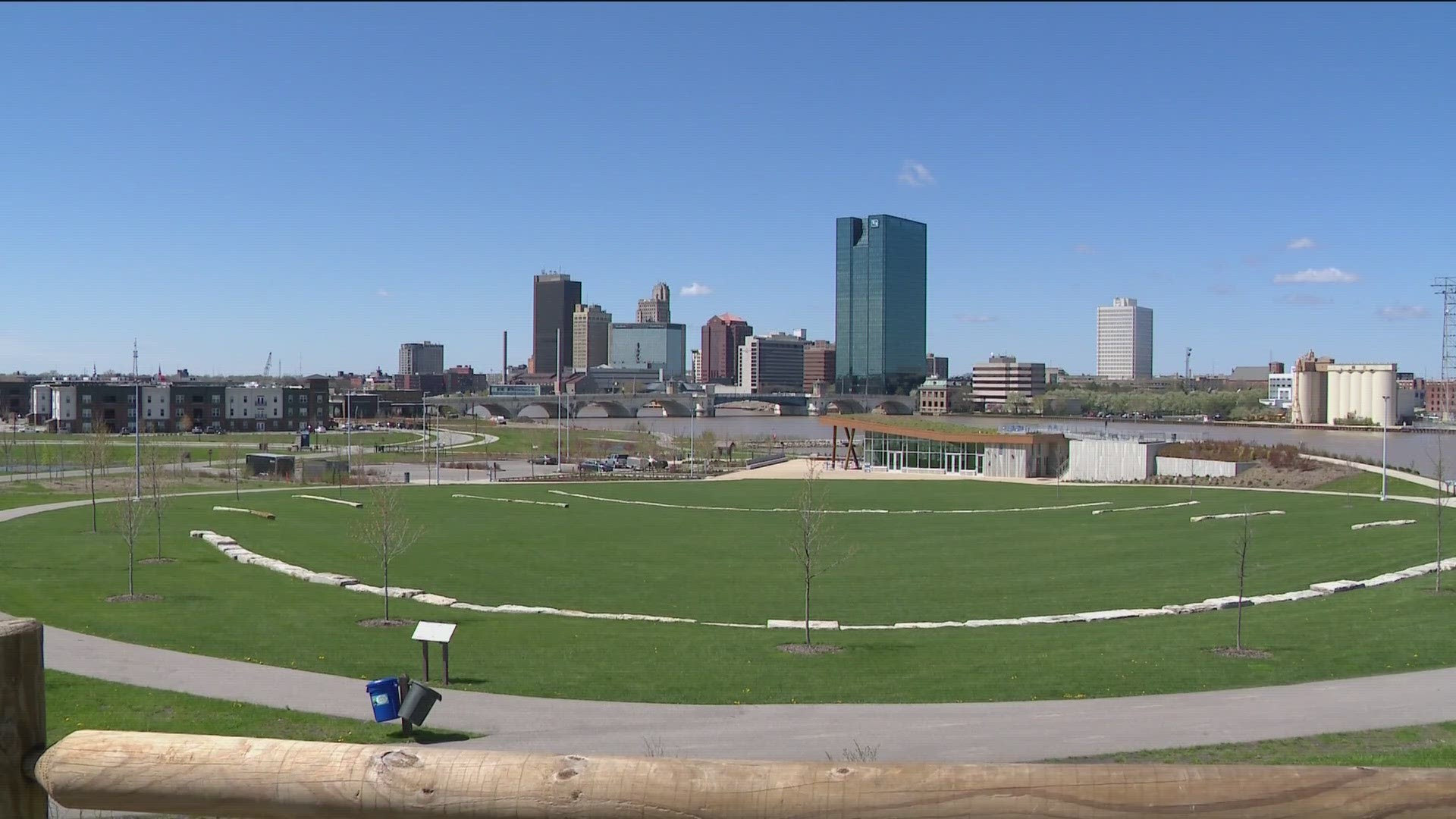

The steel sculptures decorating the yard of Thomas J. Anderson at 8246 Angola Road cannot be regulated by Springfield Township, according to a recent court ruling.
A December 20 opinion issued by Sylvania Municipal Judge Scott Ramey states that "the character of several of the objects, specifically the strawberry and corncob, indicate that these may likely be used for agricultural purposes."
In March 2006, Jacob Barnes, township zoning enforcement officer, cited Mr. Anderson for failing to to obtain a permit for the structures, which included a large strawberry and a wagon among others.
When he returned in May 2006, Mr. Barnes noted that the objects were still present, and then included a wagon, a corncob, a man holding a flag, a dinosaur and a strawberry.
Township officials believed that the steel objects met the definition of a structure, and therefore required a permit because the township zoning code defines a structure as "a combination of materials to form a construction for use, occupancy or ornamentation..."
However, Judge Ramey ruled that they are not structures because they are not permanently affixed on the ground.
Citing several other similar cases, the judge stated "when it is necessary to interpret provisions of a zoning ordinance, the provisions must be construed in favor the property owner."
Mr. Anderson, who was an unsuccessful candidate for township trustee in November 2005, told the court he has lived at the property since 1966, when it was zoned A-3 agricultural. In 1996, the property was zoned RA-3 large lot rural residential, which allows single-family dwellings and agriculture uses.
Mr. Anderson argued that he was not required to obtain a permit for the objects because they are permitted under agricultural zoning.
Agriculture is defined as "the use of land for agricultural purposes, including farming, dairying, pasturage, agriculture, horticulture, animal and poultry husbandry," and more by the zoning code.
A zoning certificate is not required by the township code for any building or structure in an agriculture area. Mr. Anderson told the court that "he uses his land for farming and housing animals."
Judge Ramey said the township failed to provide proof that any buildings or structures on Mr. Anderson's property were not being used for agricultural purposes.
"The state has failed to meet its burden of proof that these objects serve no agricultural purpose," he said.
At a January 2 meeting of the Springfield Township Trustees, assistant zoning inspector Robert Seger updated the trustees on the lawsuit and asked whether they wanted to pursue an appeal.
"The contention that it is an agricultural operation is mind-boggling," Mr. Seger said. "I don't know what the court's trying to do."
Mr. Seger said Mr. Anderson's financial records submitted to the court show he has no income from agriculture.
Trustee Andy Glenn said he also was frustrated with the judge's ruling.
"The township attempted to get it cleaned up, but the court apparently deemed it 'mining steel'-that it's an agricultural use there," he said.
"He's advertising a non-existent agricultural business," Mr. Glenn said.
In December 2005, Lucas County Common Pleas Judge Thomas Osowik issued a similar ruling concerning the property.
The trustees had filed an injunction in court against Mr. Anderson for allegedly displaying signs without a permit and operating a commercial business in a residential area.
For several months, a sign with Mr. Anderson's telephone number and "Firewood for Sale" was placed on a large wagon painted red, white and blue and filled with firewood.
At that time, Mr. Anderson's front yard also featured a flatbed trailer with a turkey sculpture, an old bus, and several metal sculptures including a dinosaur.
The court ruled the sign was in violation of the zoning resolution. Mr. Anderson told the court that he would remove it and did so.
However, Judge Osowik stated that the wagon is not a sign, and therefore it may remain in the yard.
Trustee Bob Bethel said he was unsure whether the trustees should pursue further legal action.
"That's a tough call. When I drive by there, I want to do something about it," he said. "But after all the time and money we've spent on it, we keep running into a brick wall."
Mr. Bethel suggested postponing legal action to "see if we can take a different approach, other than a confrontational approach."

